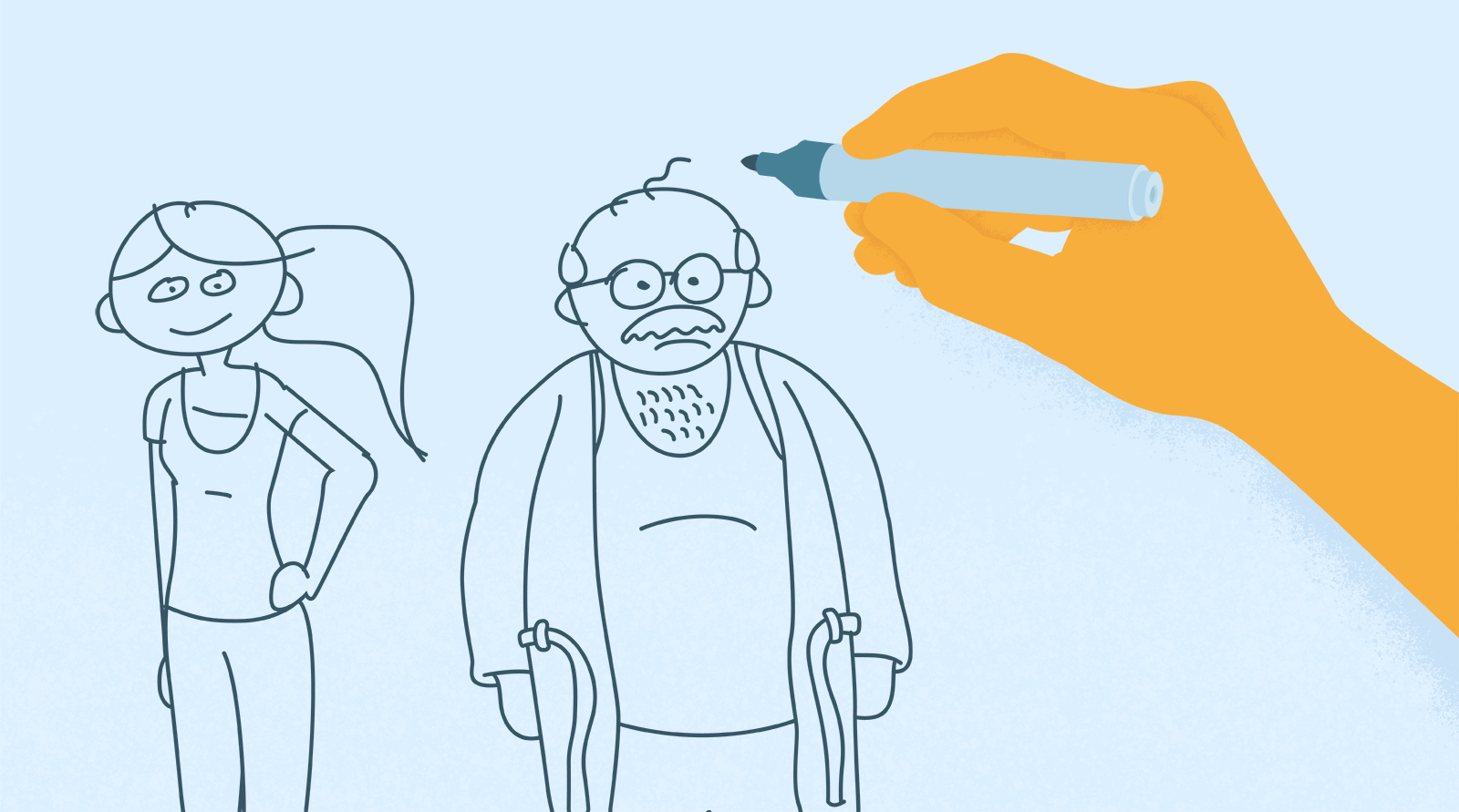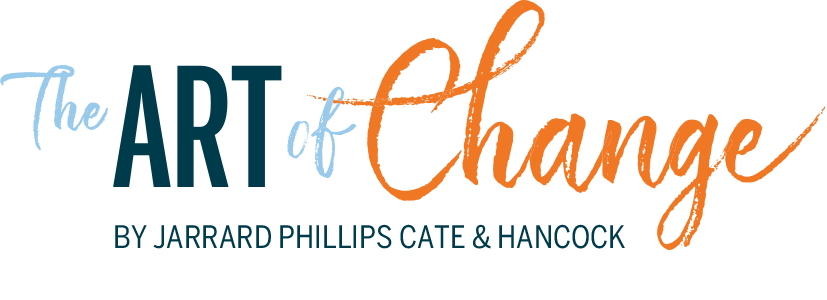
Listening and Storytelling to Change an Organization… and an Industry
Who knew a whiteboard cartoon character could change a hundred-year old organization… and the way people think about population health?
Through both careful listening and clever storytelling, St. Luke’s Health System, an eight hospital, 200-clinic healthcare system based in Boise, Idaho, figured it out. And a simple solution is moving the health of an entire community.
Listening to change an organization
In late 2016 and into early 2017, St. Luke’s was developing its forward-thinking Strategy 2020. The new initiative wisely recognized the power of the organization’s century-long legacy. However, the executive team knew all the history in the world couldn’t protect St. Luke’s from the ongoing shifts affecting every healthcare provider.
“We were operating in a pretty traditional environment,” remembered Beth Toal, vice president for communications and marketing for the health system. “While our community was growing and changing, our day to day hadn’t changed that significantly. We had a sense that significant change was coming.”
How then could they make the necessary change to propel them as a system of the future – especially when the actual nature of what it would look like wasn’t yet clear? By taking the time to listen. The executive team, led by President and CEO Dr. David Pate, set out to hear from staff, members of the community and patients – everyone who had a voice and a stake in the outcome.
While the board and leadership team were aligned – something Toal noted was critical to the success of Strategy 2020 – that alignment had to be extended to the 14,000 employees across the state. They were able to facilitate this by clarifying the organization’s internal message and connecting their esteemed mission (which was not changing) to the financial necessity of the change. The leadership team essentially wanted input into the question, “How do we position the organization to be strong and healthy to fulfill our mission?”
“To bring our teams along we had to connect our mission back to why they come to work every day,” said Toal. “So, we made the connection with the business opportunity, with what motivates them as caregivers.”
Tactically, asking that question took the form of a listening tour. The team used surveys, town hall meetings and similar methods to collect feedback from across the organization.
Beware the bogeymen
Listening to employees revealed “bogeymen” that these important stakeholders perceived about what was happening at St. Luke’s or what could happen, according to Dan Anderson, vice president of strategy and planning. “Those listening sessions became really important to understand the concerns, dispelling some and walking through ones that were legitimate,” he noted.
Leaders realized that if they didn’t tell a story, someone else would. People naturally develop opinions and are constantly creating narratives – true or false. Despite the fact that St. Luke’s was proactive in engaging employees, they had found concerns that needed to be addressed and misconceptions that needed to be dispelled. Just imagine how much more entrenched those misconceptions could be at an organization that isn’t proactive. Bottom line: People will fill the void, and you may not like what they fill it with.
Priorities, not strategies
In news that will surprise no one, healthcare organizations are not democracies. We talk about listening to all stakeholders. That doesn’t mean all stakeholders get to decide. There’s no 50.1 percent rule here.
Toal noted that St. Luke’s listening program was a critical tool but one that did not necessarily change the foundations of Strategy 2020. “Our ability to listen to frontline staff, community members and partners absolutely informed the way we implemented our strategy,” she said. “Even how we prioritized certain sections of it. I don’t know that it changed our overall direction. We were clear on the direction…”
Toal, and others at St. Luke’s, were effusive about the power of listening in helping to move the organization forward and remain accountable to the plan. But that’s the key: Listening kept them on track, it didn’t redefine their destination. In fact, St. Luke’s delayed the formal rollout of Strategy 2020 to iron out some details, but they didn’t redesign it during that time.
(We note throughout this volume of Art of Change that leaders must lead. Listening cannot become an excuse for passing off important decisions or delaying them for fear of getting it wrong. Setting a vision and a high-level strategy fits into that.)
Not getting ahead of frontline staff
Change is happening fast in healthcare, so forward-thinking health systems are accelerating the rate of internal change to keep up. Cognizant that change fatigue can cripple an organization, St. Luke’s used listening to help employees keep up.
“Dr. Pate is clear on the pace at which we need to change,” said Toal. “He’s also clear about the risk if we don’t, but is very mindful that we can’t go so fast that we leave part of the organization behind. Those listening sessions were, and continue to be, an essential barometer to make sure we’re moving forward with alignment.”
It worked. “One indicator of the effectiveness of bringing our team along,” said Toal, “was that some of the feedback we got was pretty strong and direct in a negative way. It wasn’t particularly complimentary.” That was meaningful, she said, because it showed the underlying culture was strong enough to reassure people that the administration was genuinely interested in considering their feedback and committed to helping everyone move forward. “They took the time to share input because they believed we would act on it.”
Storytelling to change an industry
Here’s where we get back to those cartoon characters.
St. Luke’s developed Strategy 2020 but needed a way to take the whole thing – including the feedback they’d received – and package it in a way that anyone could relate to. The end result was a set of videos about two fictional characters named Honda and Molly. Molly is Honda’s daughter and is worried about her dad as he struggles with the physical and emotional toll of living alone after his wife’s death. Presented as a simple whiteboard animation, the videos distill many of the challenges the St. Luke’s patient population faces and explains how the health system helps to solve those problems.
Pate recently recalled how this hugely successful tactic evolved during strategic planning back in 2017.
After my vice president of strategy and I went through the strategic plan with members of our board, one of them said, ‘You ought to do a Harvard Business Review type of case study for the strategic plan.’ Knowing that we were taking it to the full board the next week I was worried about the amount of work to get it ready in time.
But I completely underestimated the power that this would have.
Over that weekend we developed the Honda and Molly story to point out the strategic elements of our plan. We gave it to the board the next week, and they really embraced it.
What was powerful was that, while our board had been thinking about concrete concepts of population health and value, when we put this in the story of Honda and Molly, people could actually see it. We had a physician on our board who said, ‘I see five Hondas a day.’
Subsequently, when we disseminated this story of Honda and Molly through videos to our employees, I was quite surprised how they embraced it. People in different departments would make references to the characters and talk about what they were doing to deliver on that vision and strategy.
It was a tremendously effective tool for us to really get people to think about not just understanding what the term ‘population health’ means, or ‘value-based payment’ or any of these things, but to ask what they actually look like.
Enthusiastic about the way the St. Luke’s community rallied around the Honda and Molly animation model, Pate began using other anecdotes to illustrate the need for change. One story, that he often tells illustrates the concept that 30 percent of our healthcare spending is low value or no value.
It involves Pate’s mother and her frequent use of antibiotics. Thanks to a hip replacement decades ago, she takes antibiotics before every dental appointment. Or at least she did. According to Pate, current evidence now shows that people like his mother don’t need to take antibiotics as frequently. So that’s good, it saves a few dollars each time, right? Well, yes, but it goes much, much further and illustrates the massive amount of waste in our healthcare system today. Back to Dr. Pate:
My mom also has heart disease. And when she takes these antibiotics, she always has GI trouble as a result, which is a very common side effect. When she has GI problems, she loses fluid and gets volume depleted. When she gets volume depleted, her atrial fibrillation becomes uncontrolled. Then she goes to the emergency room and they may or may not be able to shock her back into a normal rhythm. If not, they end up admitting her to the hospital. So now what we’re talking about is not just less than a hundred bucks. The antibiotics that were unnecessary have now caused a $5,000 hospital admission.
The result of all this, said Pate, is a new and growing effort to explain to both the community and individual patients what the health system is trying to do and how people can best utilize care.
“These kinds of stories help explain how we’re trying to do things differently and why fee for service rewards the wrong thing,” he said. “It’s been very effective helping explain our strategy.”
Pate and his St. Luke’s team are trying to help patients think through their unique options from the standpoint of value – and from what’s really going to help them and what’s not worth it.
With more of that, he said, we’ll begin to see real improvements, not just from individual hospitals and health systems, but from our entire system of care.
